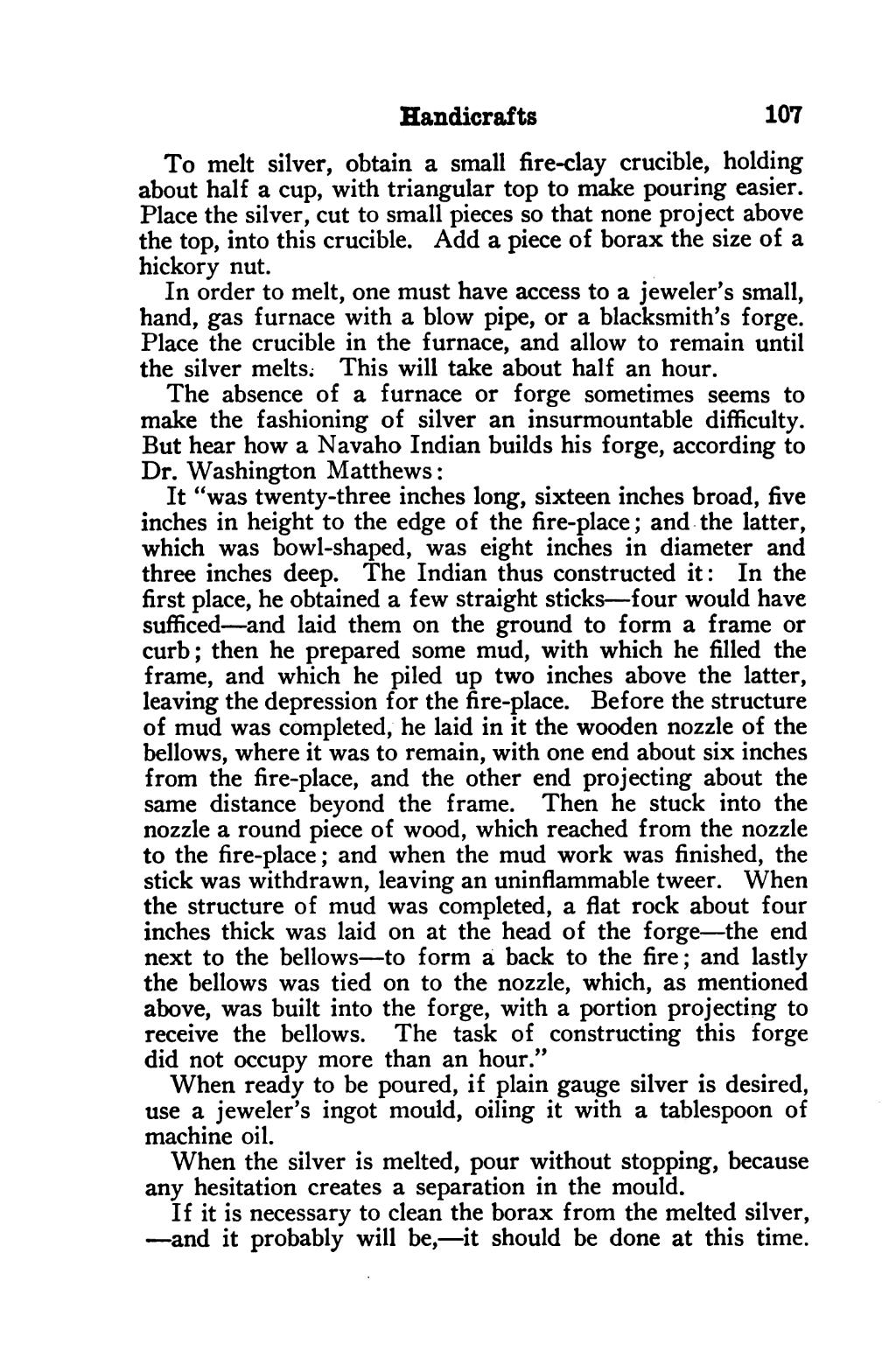Handicrafts 107 To melt silver, obtain a small fire-clay crucible, holding about half a cup, with triangular top to make pouring easier. Place the silver, cut to small pieces so that none project above the top, into this crucible. Add a piece of borax the size of a hickory nut. | In order to melt, one must have access to a jeweler’s small, hand, gas furnace with a blow pipe, or a blacksmith’s forge. Place the crucible in the furnace, and allow to remain until the silver melts; This will take about half an hour. The absence of a furnace or forge sometimes seems to make the fashioning of silver an insurmountable difficulty. But hear how a Navaho Indian builds his forge, according to Dr. Washington Matthews: It “was twenty-three inches long, sixteen inches broad, five inches in height to the edge of the fire-place; andthe latter, which was bowl-shaped, was eight inches in diameter and three inches deep. The Indian thus constructed it: In the first place, he obtained a few straight sticks—four would have sufficed—and laid them on the ground to form a frame or curb; then he prepared some mud, with which he filled the frame, and which he piled up two inches above the latter, leaving the depression for the fire-place. Before the structure of mud was completed, he laid in it the wooden nozzle of the bellows, where it was to remain, with one end about six inches from the fire-place, and the other end projecting about the same distance beyond the frame. Then he stuck into the nozzle a round piece of wood, which reached from the nozzle to the fire-place; and when the mud work was finished, the stick was withdrawn, leaving an uninflammable tweer. When the structure of mud was completed, a flat rock about four inches thick was laid on at the head of the forge—the end next to the bellows—to form a back to the fire; and lastly the bellows was tied on to the nozzle, which, as mentioned above, was built into the forge, with a portion projecting to receive the bellows. The task of constructing this forge did not occupy more than an hour.” When ready to be poured, if plain gauge silver is desired, use a jeweler’s ingot mould, oiling it with a tablespoon of machine oil. When the silver is melted, pour without stopping, because any hesitation creates a separation in the mould. If it is necessary to clean the borax from the melted silver, —and it probably will be,—it should be done at this time.
Stránka:roll 1931.djvu/123
Z thewoodcraft.org
Tato stránka nebyla zkontrolována
